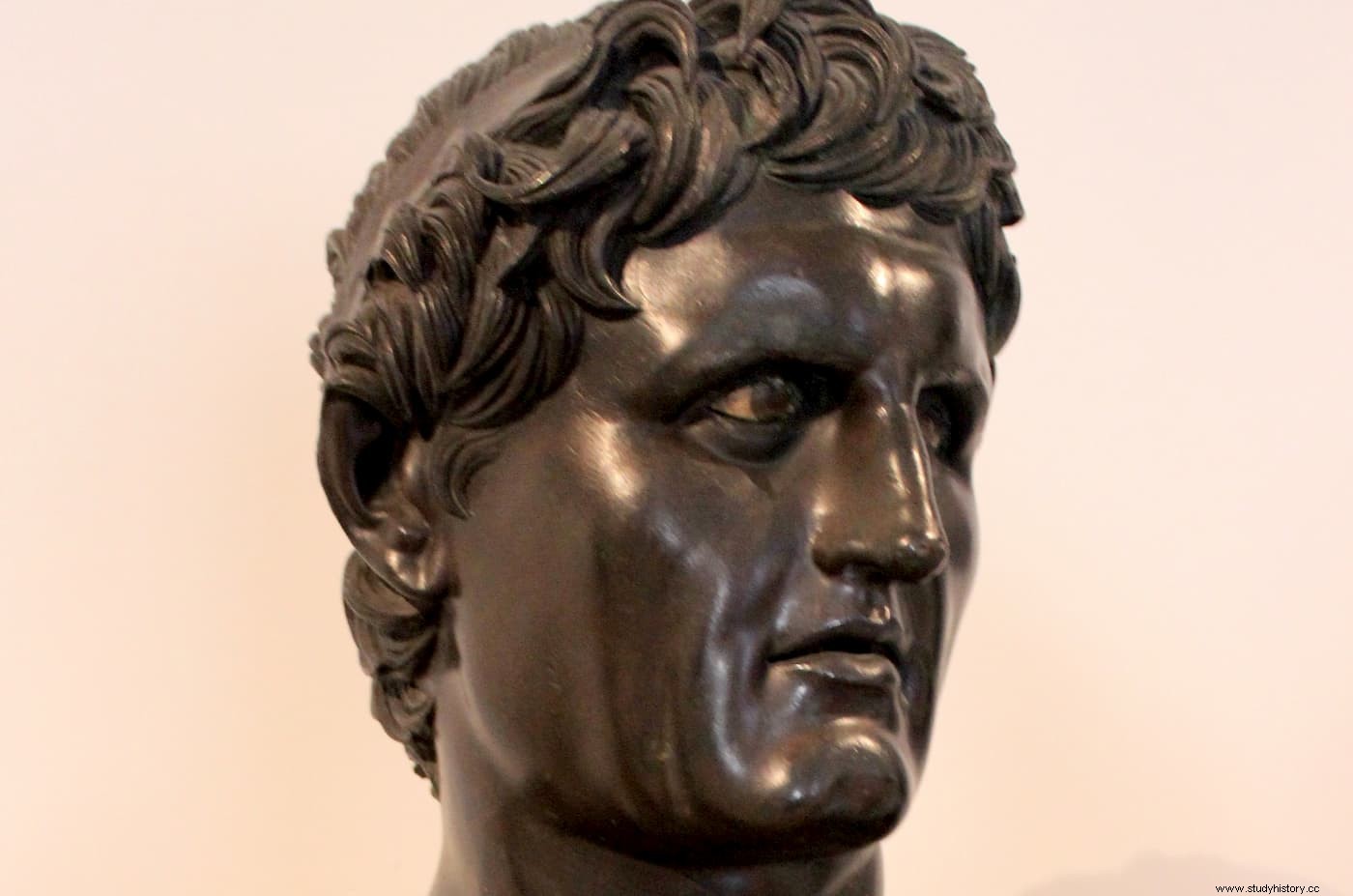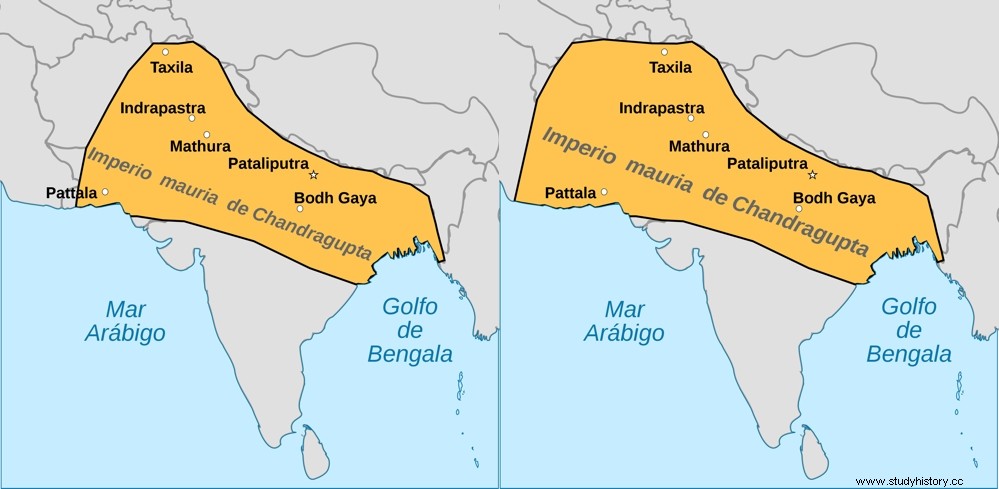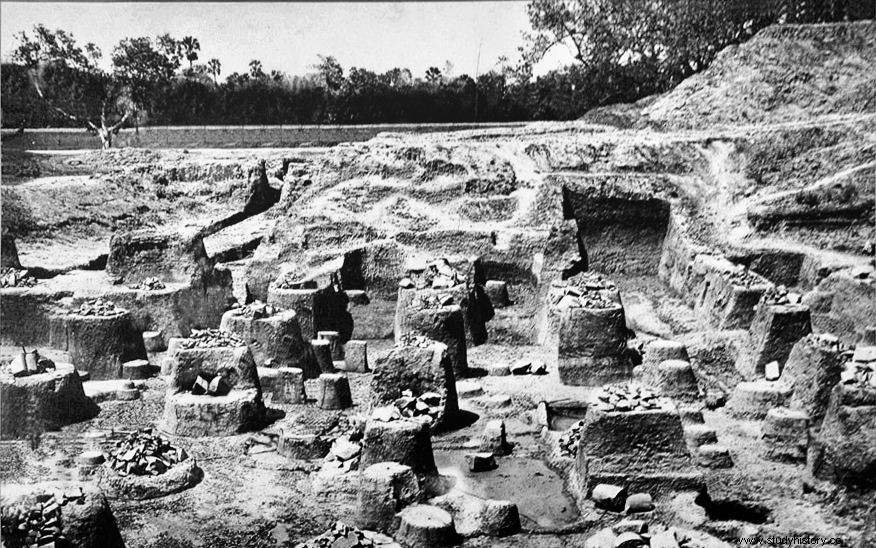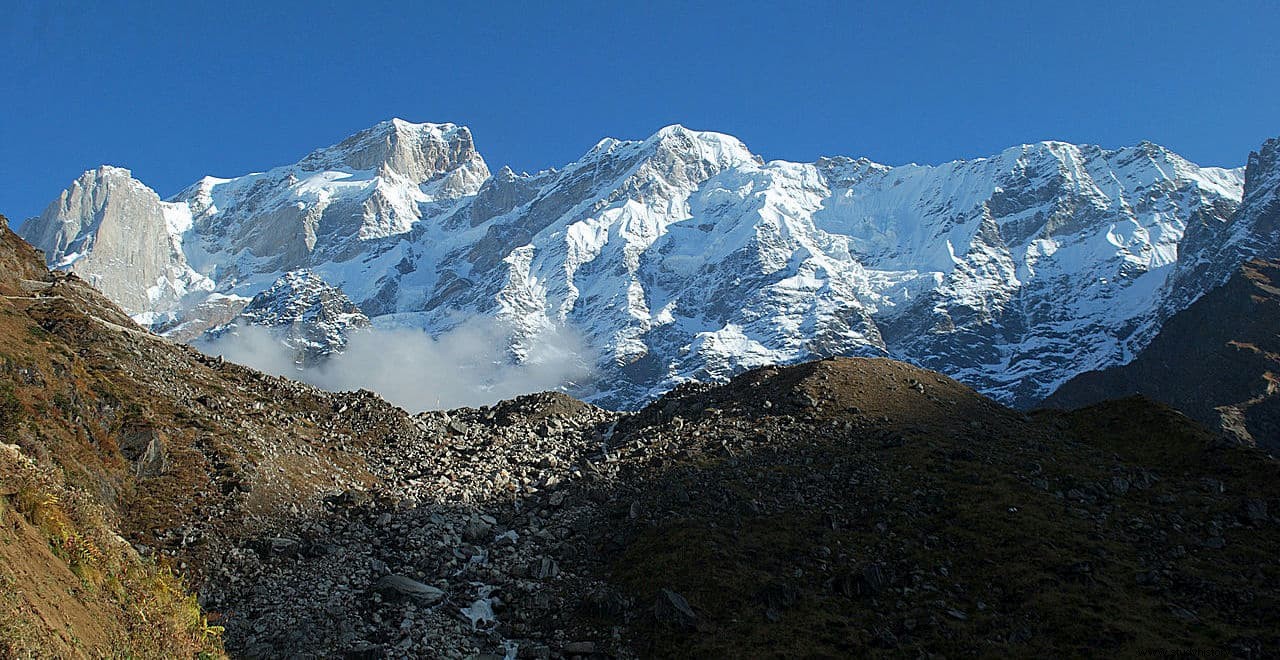As with many lost works of antiquity, its content can be partially reconstructed by citations from later authors. This is what happened, for example, with the Phoenician story of Sanjuniatón. And also with the work of Megasthenes entitled Indica , where he recounts his journey to India in the 3rd century B.C.
Megasthenes was born in 350 BC. in the Anatolian peninsula, witnessing the conquests of Alexander the Great and the subsequent division of his empire by the Diadochi. Little is known about his life until we find him at the court of Seleucus I Nicator, whose reign began in 305 BC.

Seleucus, who had been one of Alexander the Great's generals, gained definitive control of the eastern part, the largest in the empire, after the battle of Ipsos in 301 BC. His domains ranged from Anatolia, Babylon, and Persia to the fringes of the Mauryan Empire in India.
Megasthenes must have been a person of confidence for the Seleucid, since he sent him as ambassador to India against the Maurya Empire. The exact date of the embassy is not known, although historians are convinced that it must have been before 288 BC, since in that year Emperor Chandragupta died, and it is known that he met with him in his capital Pataliputra. Some historians place the visit between 302 and 298 BC

In any case, Seleucus and Chandragupta had fought a war that lasted two years, between 305 and 303 BC. Finally hostilities ceased with defeat of Seleucus and diplomatic relations were reestablished.
It is likely that this was the setting for the voyage of the ambassador Megasthenes around 304–303 BC. If he was the one in charge of negotiating the peace (Bosworth believes that the trip took place ten years earlier), he did not do too badly:Seleucus married his daughter Helena with Chandragupta, and he gave the Greek 500 war elephants, which he they came in handy in 301 B.C. in the battle of Ipsos against Antigonus, and then in that of Corupedius against Lysimachus in 281 BC. Of course, in return Seleucus ceded vast territories to the Maurya.
What the sources say, without revealing the date, is that Megasthenes lived in the court of Sibirtio, the satrap of Arachosia, who ruled subject to Seleucus, and used to visit Chandragupta:

As we said at the beginning, Megasthenes collected his trip, or trips to India, in a now lost book entitled Indica , partially reconstructed by the philologist John Watson McCrindle at the end of the 19th century, through the citations of other authors such as Flavio Arriano, Diodoro de Sicilia, Estrabón or Plinio. The parts of India he visited are known for this:he entered the subcontinent through the Pentapotamia (the five tributary rivers of the Indus) in present-day Punjab, leaving a description of them. From there he followed the royal route to Pataliputra, later turning south to Madurai and the island of Taprobane (Sri Lanka), quite possibly returning the same way.
But not all authors give it the same credibility. Strabo, for example, refutes many of his claims, because it indicates contains many more or less fantastic stories about people with strange physical characteristics (backwards feet, huge ears, etc.). It is believed that Megasthenes exaggerated some facts because he tried to show that India was an impregnable territory, thus justifying the defeat of Seleucus, not in vain was he at his service. But there is also the possibility that later authors may have misunderstood some of his descriptions when transcribing them.

Among the interesting facts we found in Indica There is the calculation that Megasthenes made of the size of India, as we find it quoted by Arrian:
The longitude of 16,000 stadia would be equivalent to 2,786 kilometers, while the latitude of 23,300 stadia would be 4,057 kilometers, measurements quite similar to those provided by Eratosthenes a few decades later.
The preserved fragments include data on fauna, flora, customs, geography, history, and everything that Megasthenes considered of interest to reflect in Indica .
Evidently, it was the Electrophorus electricus or electric eel, which can emit discharges of up to 850 volts. He also said that the island of Taprobane (Sri Lanka) was separated from the mainland by a large river, and that abundant pearls and gold were produced there. Regarding gold, we find what is perhaps the most famous passage in his work:

And of course he refers to the Himalayan mountain range (Imao), which he says Alexander's soldiers called the Caucasus, perhaps because it reminded them of the other Caucasus located between the Black Sea and the Caspian.
It is not known exactly how many times Megasthenes was in India (from what Arrian says it seems that he made several visits) nor how much time he spent traveling through it. Nor do we know anything about his life after the famous embassy or the date of his death.
Your Indica he is considered to be the first Western description of India and the Gangetic Plain, and in fact he is the first foreign ambassador mentioned in the historiography of the subcontinent.
